A Brief History of the Potato & The Tastiest Potato Dishes in Indian Cuisine
By Conchita de Souza
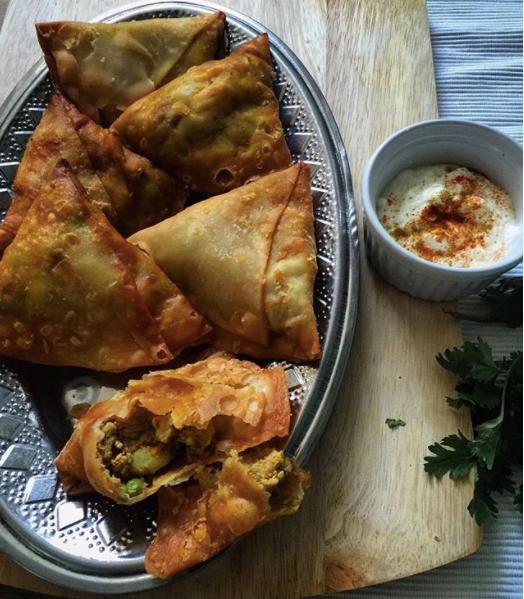
By Conchita de Souza

By Conchita de Souza
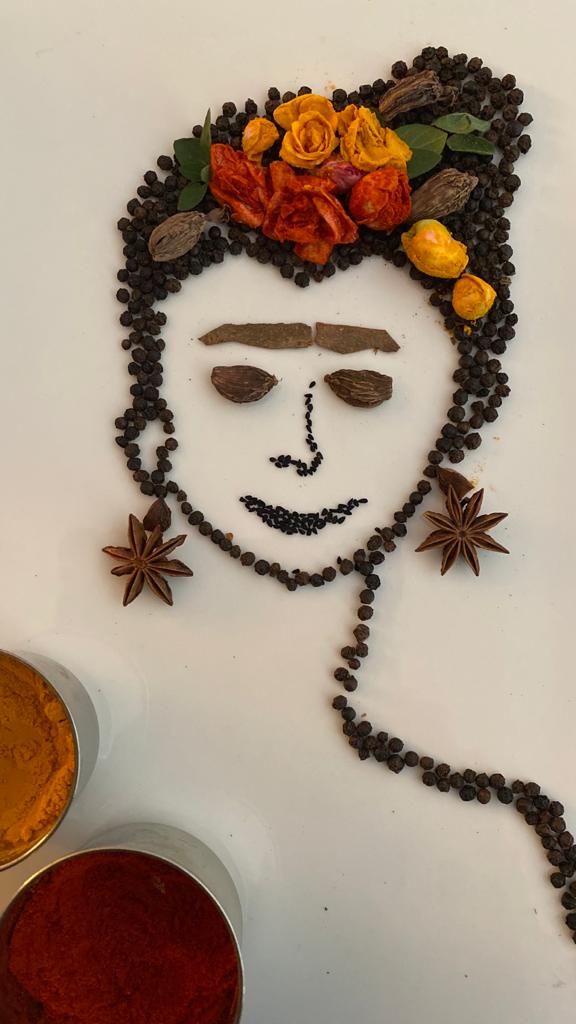
From an evolutionary perspective and in the natural world, winter is a time of dormancy or hibernation; storing whatever energy we can from the reduced hours of daylight, trying to keep ourselves warm against the harsh cold and staying put. From a culinary perspective, the cold season is a great time for hearty stews, steaming soups, slow-cooked curries, anything-with-a-side-of-potatoes and mulled wines. You will notice that your body craves different foods during the colder months and for many, carbohydrates can be the ultimate comfort but you can rely on other sources as well.
By Conchita de Souza
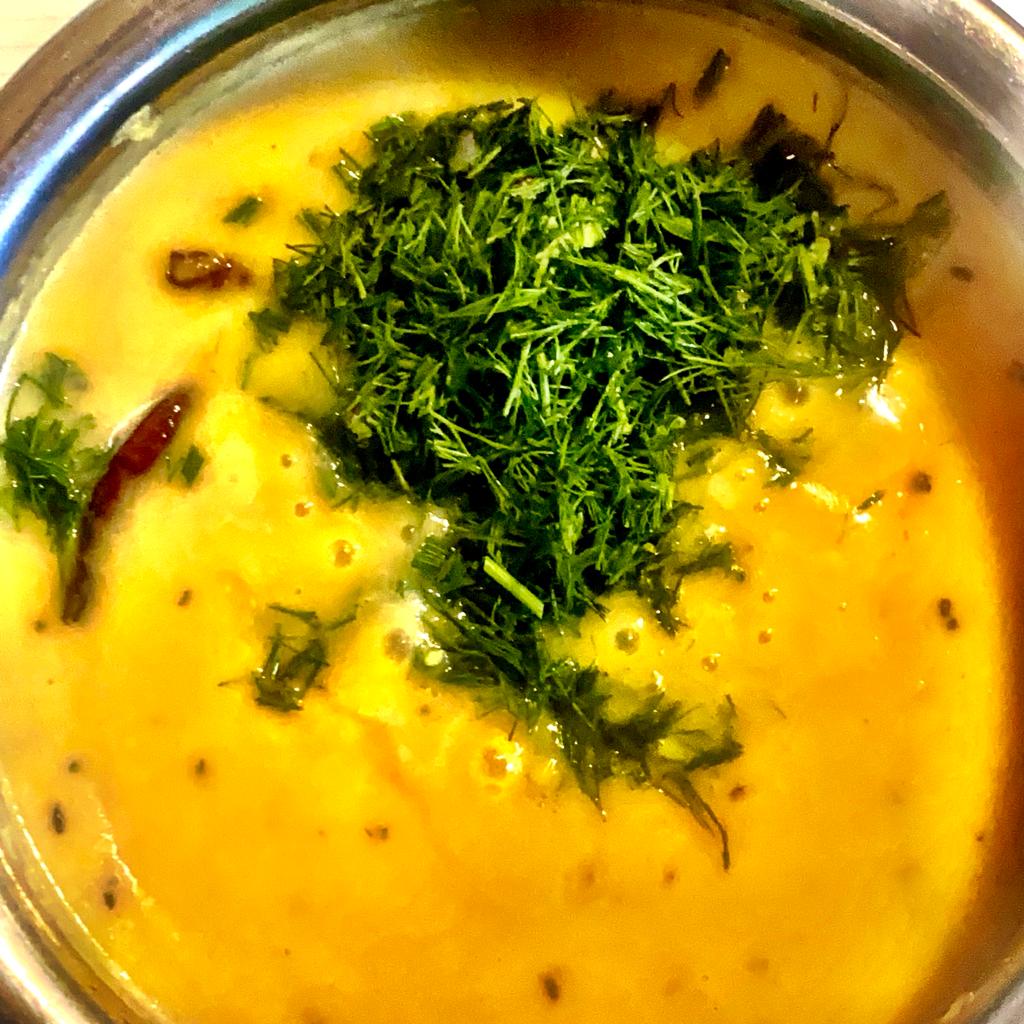
We know that the cuisines of India are defined by the different combinations of spices, some of which are unique to different regions of India, such as panch phoron which is found in eastern parts of India as well as in Nepal and Bangladesh and contains the seed forms of the following spices: cumin, nigella, fennel, black mustard and fenugreek. The realm of spices used extend beyond dried, powdered and whole spices to fresh spices as well, or what we would term as ‘herbs’ in western cuisines.
Today’s post explores the common ‘herbs’ used in Indian cuisines. Whilst herbs are often used as garnishes or in marinades, some of the herbs listed below are used during the tadka or tempering stage of cooking. Fenugreek leaves can be used as the star of the show. Not surprisingly, most, if not all of these herbs possess medicinal qualities, which has not been discussed in depth.





By Conchita de Souza
Today, I wanted to reflect on what mother’s cooking has meant to me, and to so many others who have been nourished daily by the food lovingly prepared by our mothers and mother-figures.
All of us have been nourished and nurtured by our mothers, even before we take our first gasps of breath on this earth. Right from the very point we are conceived and as we grow as foetuses inside our mother’s wombs, we are provided with nutrition and oxygen through the umbilical cord that connects us to our mother’s placenta.
After our arrival on earth, we suckle at our mother’s breasts and the milk from it nourishes us until our tiny bodies are ready to take on the challenge of solid foods. Up to this point, mother nature places mothers at the centre of a baby’s universe, completely and utterly dependent on their mothers for sustenance.
Our bodies continue to grow, from childhood to adolescence and we rely on our mother’s cooking to get us through the school days, the weekend activities, the night time studies, the after-school munchies and the birthday party meals (not to underplay the role of fathers play in this process too). And if it isn’t our mothers, then perhaps it is our grandmothers, aunties, neighbours or family friends that come into the picture when our mothers are not comfortable cooks, are busy with work, are unwell or struggling, or have left home or left this earth.
For many, a home-cooked meal is synonymous with our mums, and the love and effort they put into the food they prepare knowing that it will nourish us one way or the other. If on one weeknight we return home as parents ourselves, her food conjures up memories of the past and of the ignorant blisses of our childhood. If we have been away from for too long, her food reminds us of the safety, security and comfort of home. If we are sick or unwell, her cooking heals our ailments just as bandages and plasters heal wounds and broken bones. If we have had a bad day at school or work, her food soothes bruised egos and dejected souls alike. This is the reach a mother’s cooking has, no matter how simple or elaborate the meal she makes.
I have been blessed to have various mother-figures in my life, and I am grateful for them all, especially after losing my own mother in my late teens and missing her terribly to this day. In cooking and having a meal with me, these women have shared their roots, their cultures and their stories. Whether it be the traditional food preparations of my ancestors as shared by my godmother from our ancestral village, the unique fusion of Chinese and Indian cuisines in a Malaysian dish as shared by my neighbour in her kitchen not too far from mine or the intricacies of making melt-in-the-mouth Pakistani shammi kebabs as shared by my aunty. Thank you for nurturing and nourishing, healing and soothing, inspiring and invoking; I hope, one day, to do the same myself and be on the giving end rather than the receiving one.
By Conchita de Souza
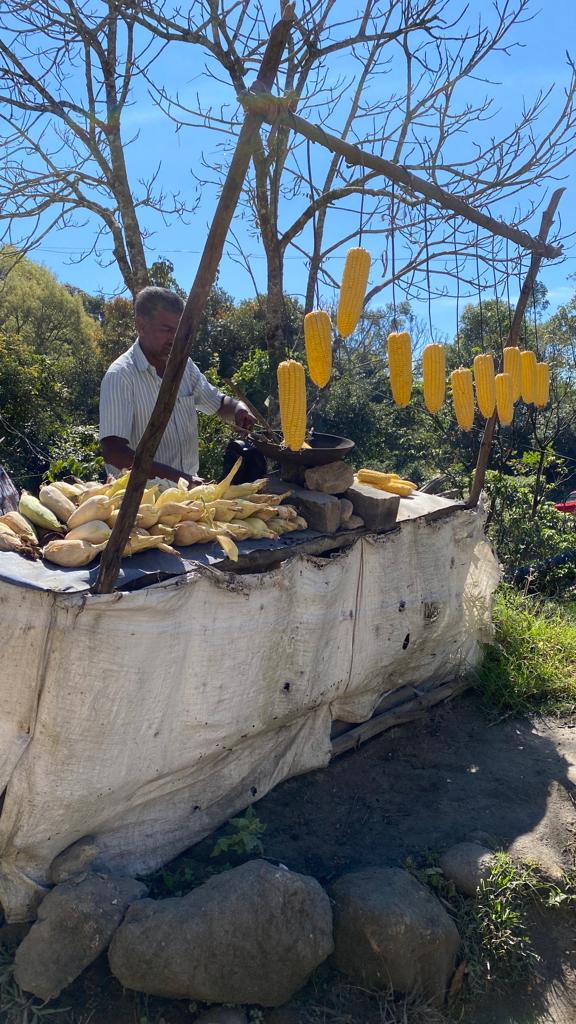
By Conchita de Souza
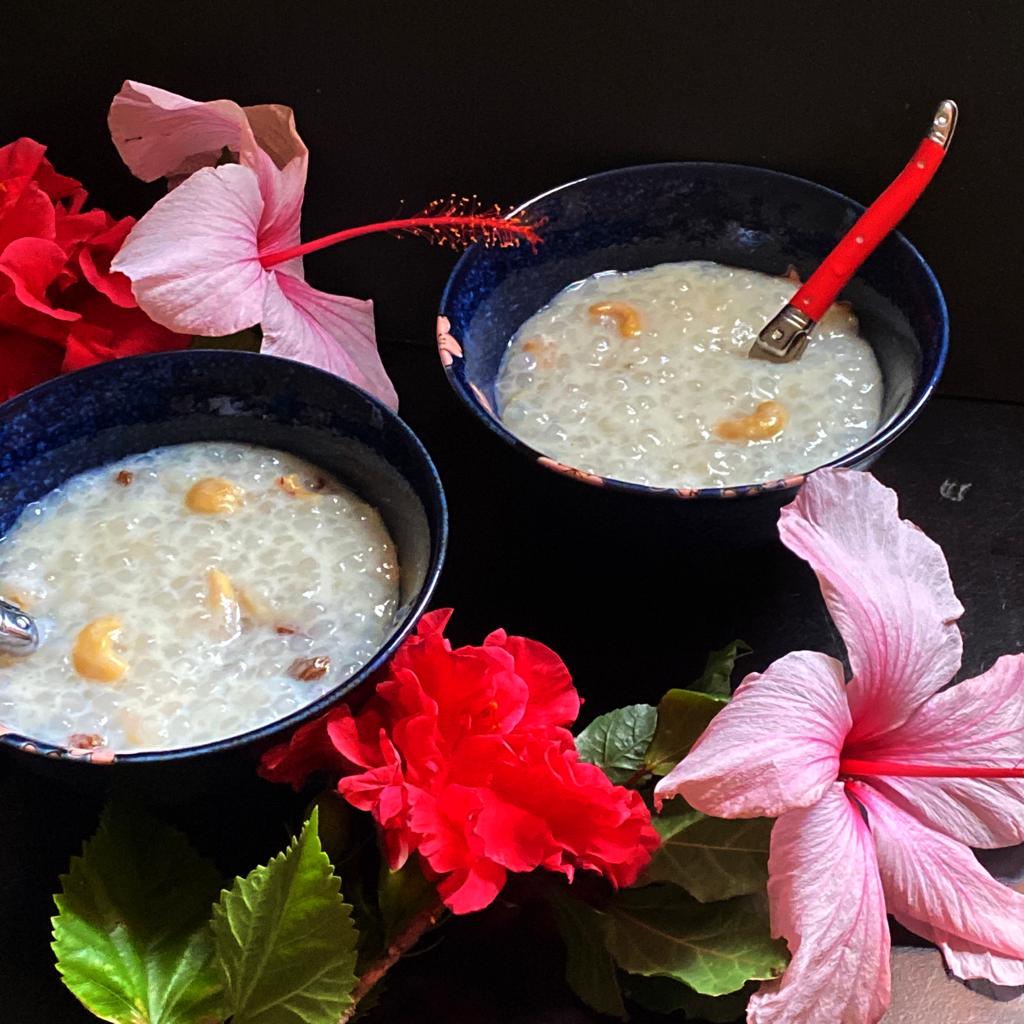
Image: Sabudana Kheer is a pudding made from sago and can be consumed during fasts.
If you are not familiar with Hinduism and its many deities, it can be difficult to follow the elaborate and intricate mythologies and accompanying rituals that have developed over the millenia. Though I come from a strong Catholic upbringing, my time spent living in India as an adult as well as my practice of a classical Indian dance form (Kathak) have given me the opportunity to experience hindu traditions and learn about the customs, stories and practices that define it. From a very basic introductory level, the three Gods you might want to acquaint yourself with are Brahma (The Creator), Vishnu (The Preserver) and Shiva (The Destroyer), the last of whom this grand festival honours.
In Indian mythology, Lord Shiva is pictorially depicted as a muscular being with long flowing dreadlocks, the crescent moon on the side of his forehead and the third eye at its centre, a snake draped around his neck, a bare torso and his loins draped only with the skin of a tiger. He is depicted sitting in a meditative position, cross-legged with his four hands, two of which are held in mudra and the other two holding a trident (thrissur) in one hand and a percussion instrument (damaru) in the other. Aesthetics aside, Shiva is not so much a physical character as he is an all-pervasive energy and consciousness itself.

Image: A depiction of Lord Shiva (unknown)
Maha Shivratri literally means the Great (maha) Night (ratri) of Shiva and falls on the night before the new moon in Hindu month of Maagha or Phalguna (marking the start of springtime in the Northern Hemisphere). Like many grand festivals in India, it is celebrated in different ways according to the region and community and even the lore surrounding the origins of this festival differ. The underlying purpose of this festival is to honour, worship and rejoice in Lord Shiva.
The stories behind the origins of the festival include:
Lord Shiva and Yoga
In the Yogic tradition, Lord Shiva is known as Adi Guru or Adi Yogi, which means that he was the first Guru from whom the science of Yoga originated and the first to practise Yoga. Those of you who practise yoga might be familiar with the position shavasana which is laying still, as though dead. Shava, lifelessness is the opposite of Shiva which embodies the potential for life. It is believed that on this auspicious day Lord Shiva, who had been in a state of meditation for millenia become completely and utterly still.
What happens on this day
Maha Shivratri is an auspicious time when the positioning of the northern hemisphere of the planet allows for human beings to experience a natural upsurge of energy. It is therefore a time of prayer, meditation and fasting.
A devotee would start the day with a sunrise dip in the holy river Ganga (or a shower/bath for those who are not able to bathe in the river) and put on fresh and clean clothes. They would proceed to a temple to offer a pooja (prayer) that involves a specific ritual of bathing Shiva’s linga in milk and/or water. The linga ritual will happen every 3 hours and the statue is bathed in natural items including that of milk, honey, yoghurt, sandalwood paste and rosewater.
Most devotees would observe a complete fast throughout the day (no food or water), or, if eating, would consume light meals such as fruit, milk and certain vegetables and non-grain items. Spices are restricted to jeera (cumin), pepper, green cardamom, cinnamon and ajwain. Salt is avoided and instead black salt is used. Vrat foods such as sabudana khichdi (a dry risotto made from sago) and sabudana kheer (sago pudding) can be consumed, but usually only after the evening prayer.
By Conchita de Souza
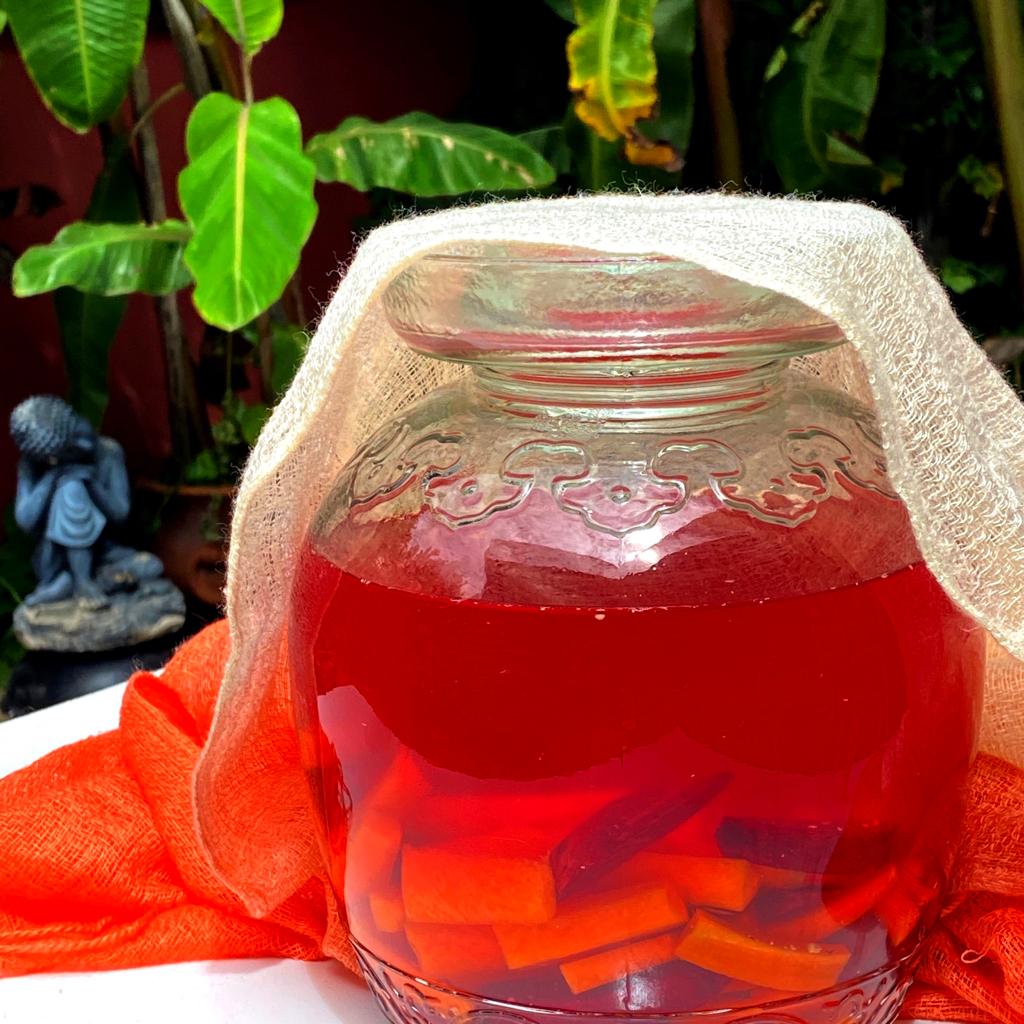
Image: Kanji is a cooling probiotic drink made from beetroots and carrots
Summer may almost be over (cue *teary eyes*) but hopefully the warmer weather will linger well into the first month of autumn. This time of the year permits us to savour summer’s many bounties, whether that be the longer days (though they are becoming shorter as we tilt further away from the sun), the fresh fruits (plums, nectarines and peaches are still in the market), picnicking or entertaining outdoors and swimming in various bodies of water to cool off.
Most parts of India experience harsh summers and the heat ranges from sweltering, highly humid or searingly dry heat, all of which are pleasant experiences when you throw in a population of 1.1 billion! These extreme conditions have resulted in creative ways to stay cool in terms of architecture, fashion and diet.
I was smart enough to backpack across five Indian states in the month of April, at a time when the summer heat was cranked up enough to risk burning your feet if you decided to go anywhere barefoot (I visited a lot of temples). The states I travelled across were Uttar Pradesh, Madhya Pradesh, West Bengal, Odisha and Bihar. All of them were exceptionally hot (save for my time at the hill station Darjeeling). During my travels, eating food was not nearly as important as staying hydrated and even water alone could not quench my thirst. On the hottest of days, I can clearly recall the refreshing feeling of a cooling drink as I pressed the glass/carton to my burning cheeks before the contents slid down my throat.
Here are our favourite summer coolers that you can try out when the mercury skyrockets:


By Conchita de Souza
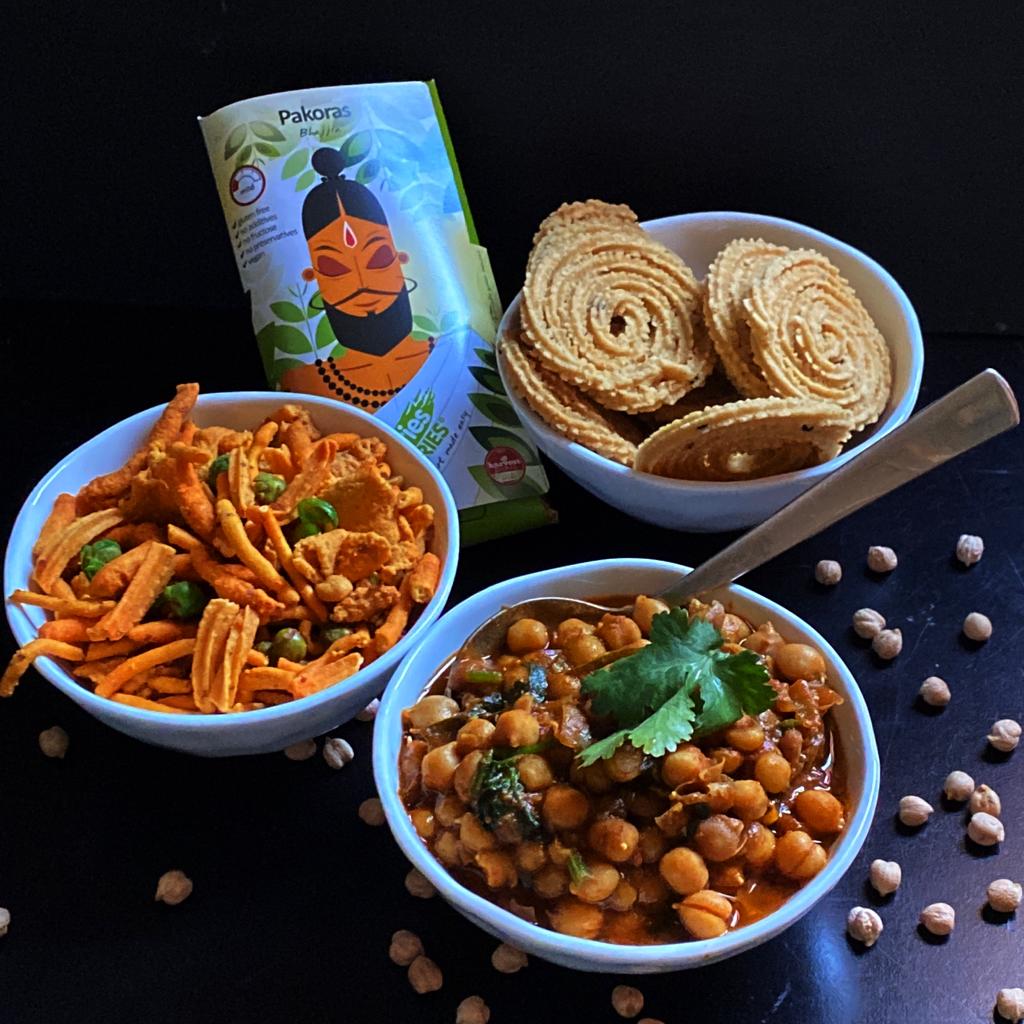
Image: Teatime snacks of gathiya (left) and chaklee (right) as well as channa masala (bottom) are all dishes using the chickpea.
In the last fews years and thanks to the rise of TikTok and Reels on Instagram, there have been popular trends using certain ingredients in ways that we had not thought of before. For example, who would have thought that Zucchini (or courgette) could be used as noodles or spaghetti or as a key ingredient in loafs? And sweet potatoes in brownies?
In India, the humble chickpea has been and continues to be used in a myriad of forms - sweet and savoury. Today’s post explores its use throughout Indian cuisine and beyond.
A bit about chickpeas
Chickpeas are said to have originated in the Middle East with traces found in Turkey dating as far back as 7,500 years ago.
The two main forms of chickpeas are the Kabuli Chickpeas, also known as Garbanzo beans and Desi chickpeas which are known as Kala Channa in the Hindi/Urdu languages or Bengal Gram. The former is lighter in colour, almost beige and the latter has a dark brown coating. Desi chickpeas are skinned and split to make channa dal. Green chickpeas (hara channa) is another variety that is sweeter than its counterparts.
According to the Food and Agriculture Organisation (FAO), India is the world’s largest producer of chickpeas followed by Australia and Turkey.
From a nutritional perspective, chickpeas are a great source of both protein and fibre, allowing you to feel fuller for longer.
Used as a whole legume
Many states/regions in India have a localised chickpea curry that is a staple in homes. Ours is a favourite of many customers and you can try it here.
Used in flour form
In India, channa dal, which is the black chickpea skinned and split, is ground into flour and called besan. Chickpea flour made from kabuli chickpeas is not the same as besan, which is finer and softer. Both are great gluten-free alternatives to regular wheat flour.
Besan is used to thicken gravies, bind patties and to dust fish before frying. It is indeed a staple in an Indian pantry.
Savoury
1. Mains

2. Snacks

Dessert (Mithai)
Many a mithai is made from besan and the reason it works so well is because of the naturally nutty flavour it imparts. More importantly, the besan is ever-so-soft in texture and your teeth sink through it with every bite and it melts whilst sitting on your tongue.

Other uses of Besan (Beauty)
Chickpea flour is made into a paste and is used in lieu of soap to wash babies after they have been massaged with a vegetable oil.
It can also be used as a natural face mask to cleanse away impurities. Click here for a homemade recipe that has just three ingredients including the flour itself!
We trust you have been convinced to give Chickpeas and Besan a home in your pantry.